Common processing methods of Brazilian coffee beans Flavor characteristics of half-sun deep-baked bourbon coffee beans
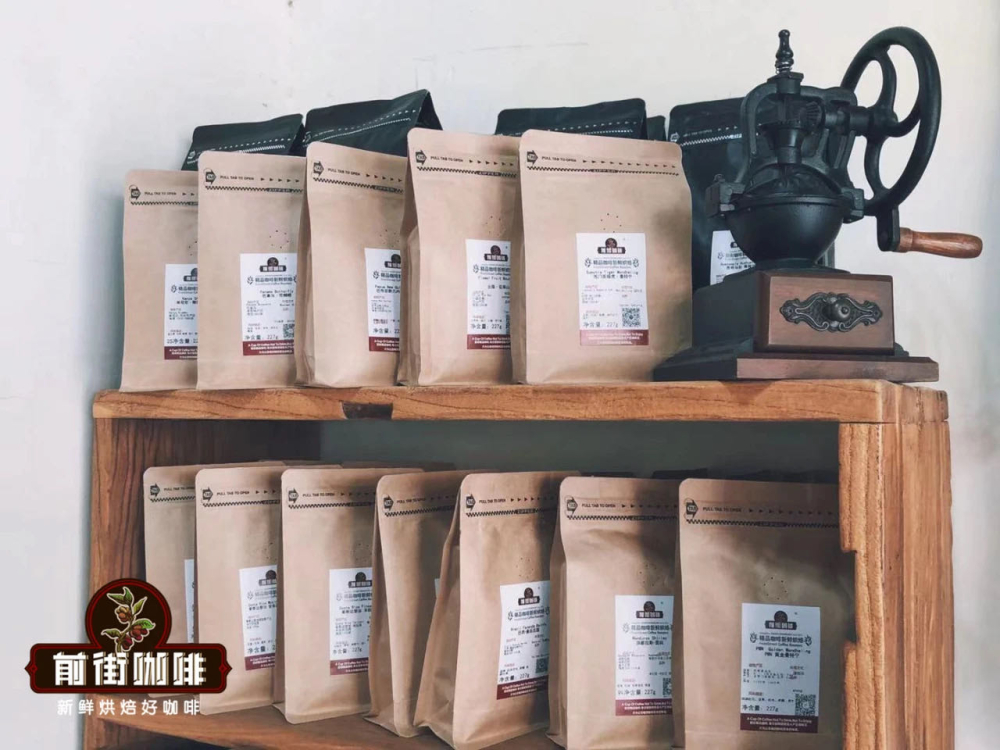
Brazil is a hot country, but behind the enthusiasm, it is also very gentle. Brazilian coffee is a very excellent example. When many coffee Xiaobai first started, the wild acidity of African coffee beans and the rich bitter aroma of Asian coffee beans were both pleasant surprises and frustrations. Brazilian coffee beans, on the other hand, give them motherly tenderness, neither too sour nor too bitter, with a rich aroma. It can be said that Brazilian coffee beans are the friendliest individual coffee beans for competitors who are beginners to make coffee.
When it comes to coffee beans, we have to mention Brazilian coffee beans. As Brazilian coffee production ranks first in the global coffee production, as long as something happens in the coffee producing areas of Brazil, there will be corresponding fluctuations in the prices of the international coffee futures market. For example, since the outbreak of the new crown epidemic, the global price of coffee beans has doubled in just one year due to the shortage of maritime transport and a series of extreme weather disasters in Brazil.
However, people may have grown coffee beans in Brazil for only more than 300 years. Before the 1820s, there was actually no sign of coffee trees in Brazil, when a Portuguese officer stationed in Brazil was ordered to go to French Guiana to resolve the territorial dispute between France and the Netherlands. But the Portuguese officer made eye contact with the local governor's wife. On her return trip to Brazil, the Governor's wife sent a bouquet with coffee seeds hidden in it. Later, coffee quickly adapted to the climate of Brazil and thrived.
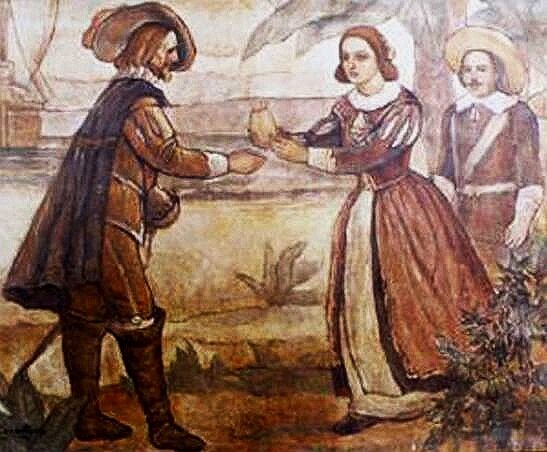
After the 1770s, Brazilian coffee beans developed rapidly. At that time, the American people demonstrated against the British Tea tax Act, and there was an incident of pouring tea in Boston, which listed coffee as a patriotic drink. The number of cafes in North America has increased, and the demand for Brazilian coffee beans has soared. At the same time, such huge economic benefits have also brought better local transportation measures in Brazil, with direct access to coffee plantations by railway, which greatly reduces the time and cost of transporting coffee beans and makes the whole transportation process more convenient.
Soon after, the Civil War took place in the United States, and coffee became the military rigid demand of the forces of the North and the South of the United States, and the demand for Brazilian coffee beans further expanded. In Brazil at that time, the variety of iron pickup was planted, and the variety of iron pickup coffee was elegant in flavor, but produced less. So someone embarked on a journey to find high-yield coffee varieties, and bourbon varieties from the island of Reunion were introduced to Brazil for this reason. By the 1870s, bourbon coffee became the main variety of Brazilian coffee beans.
In the 1930s, due to the Great Depression in the United States, a large number of Brazilian coffee beans were hoarded in warehouses and could not be sold. Later, they had to burn a large number of Brazilian coffee beans to proudly return the price of coffee beans to normal. And then even set up a more complete system.
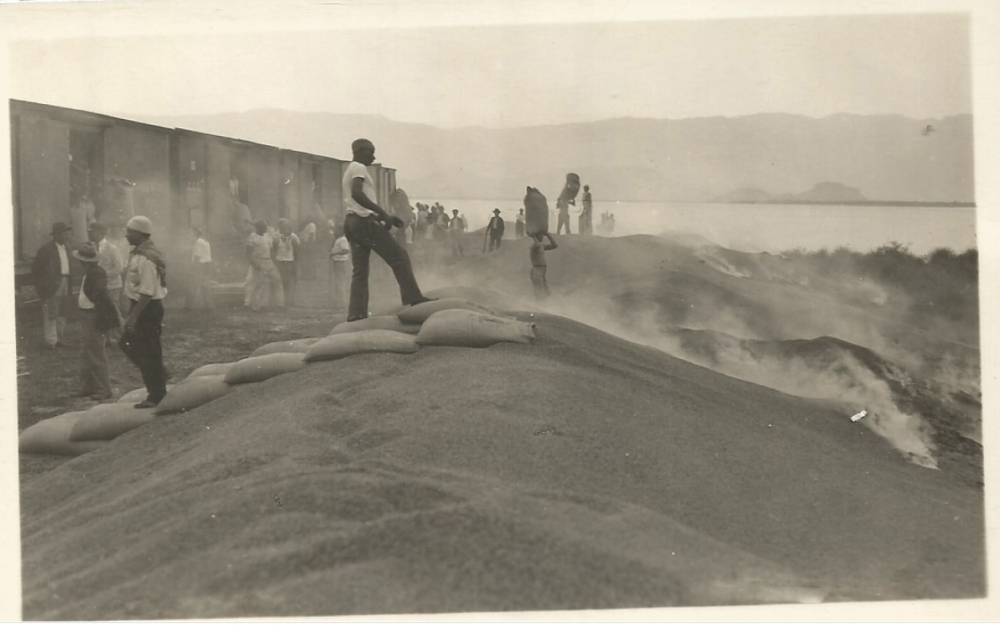
In the 1990s, the Brazilian authorities wanted to use water washing in order to sell Brazilian coffee beans around the world as quickly and in large quantities as possible, but because not every part of Brazil had sufficient water resources and sufficient funds to allow him to do so, half-sun treatment (Pulped Natural) was derived. This kind of half-sun treatment is to remove the peel and pulp of coffee fruit and directly dry the shell beans with pectin layer. Due to the removal of peel and pulp, the drying time is shortened to a certain extent, and the quality of raw beans is further improved.
In the early 21 century, in order to shorten the processing time of raw coffee beans and improve the quality of raw coffee beans, the Costa Rican authorities drew lessons from Brazil's half-sun treatment and derived the honey treatment method. Costa Rican coffee has a synonym of "as sweet as honey".
On the bean list of front street coffee, there are two kinds of coffee beans from Brazil. One is red bourbon coffee from Hilado, Minas Gerais, and the other is yellow bourbon coffee from Morgiana, Sao Paulo.
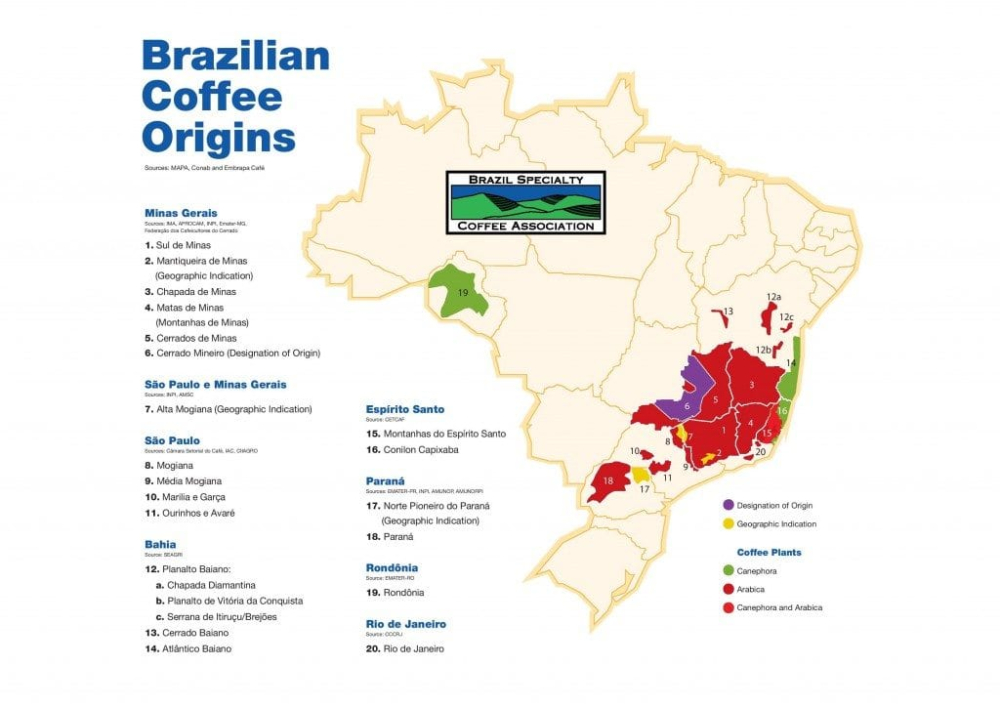
In the Qianjie rations series, many coffee beans adopt the treatment method that can best reflect the local conditions and soil, that is, the washing method, but because the characteristics of some producing areas also come from their most traditional treatment methods, so the post-treatment methods of some raw coffee beans follow the local traditional treatment methods, such as semi-washing and half-sun treatment. Brazil, on the other hand, uses half-sun treatment, which gives Brazilian coffee beans a more fruity aroma, thick taste and obvious sweetness.
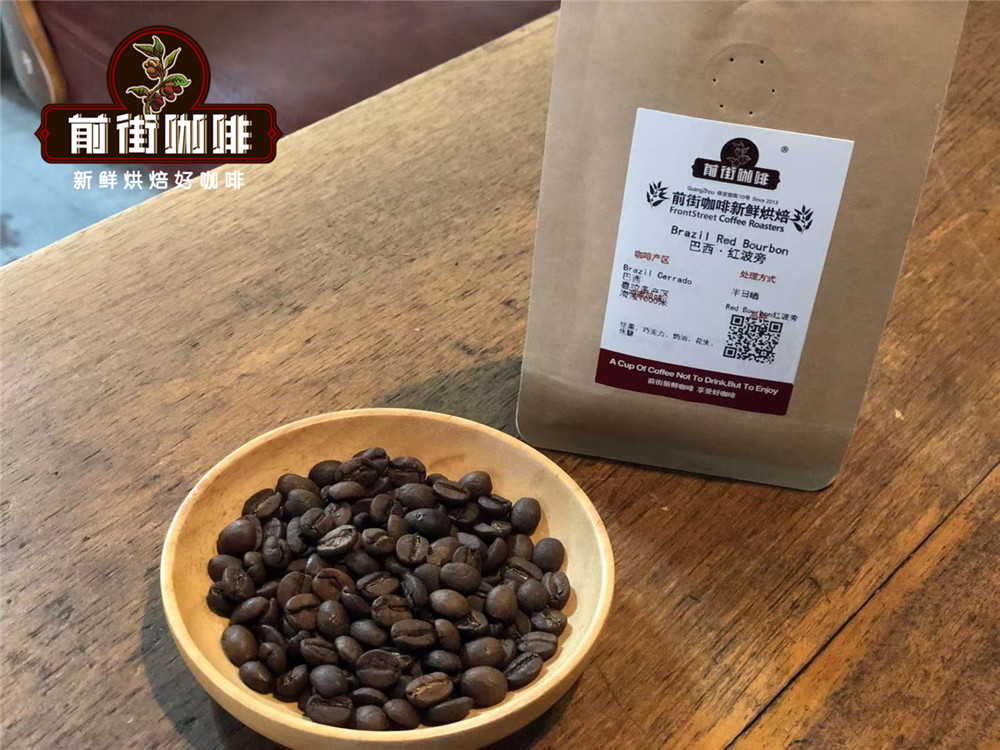
Front Street Coffee Brazilian Red Bourbon Coffee beans
Producing area: Syrador, Minas Gerais, Brazil
Altitude: 1000 m
Variety: red bourbon
Treatment method: half-sun treatment
Another coffee bean on the front street bean list that is also from Brazil is the yellow bourbon coffee bean from Queen's Manor. The Mojiana producing area where the Queen's Manor is located is a coffee-producing area with a long history in Brazil, and the excellent production of the Queen's Manor is recognized by many people. Since the first COE Cup was held in Brazil in 1999, the Queen's Manor has won many prizes for many years, with a record of 12 awards in 7 years.
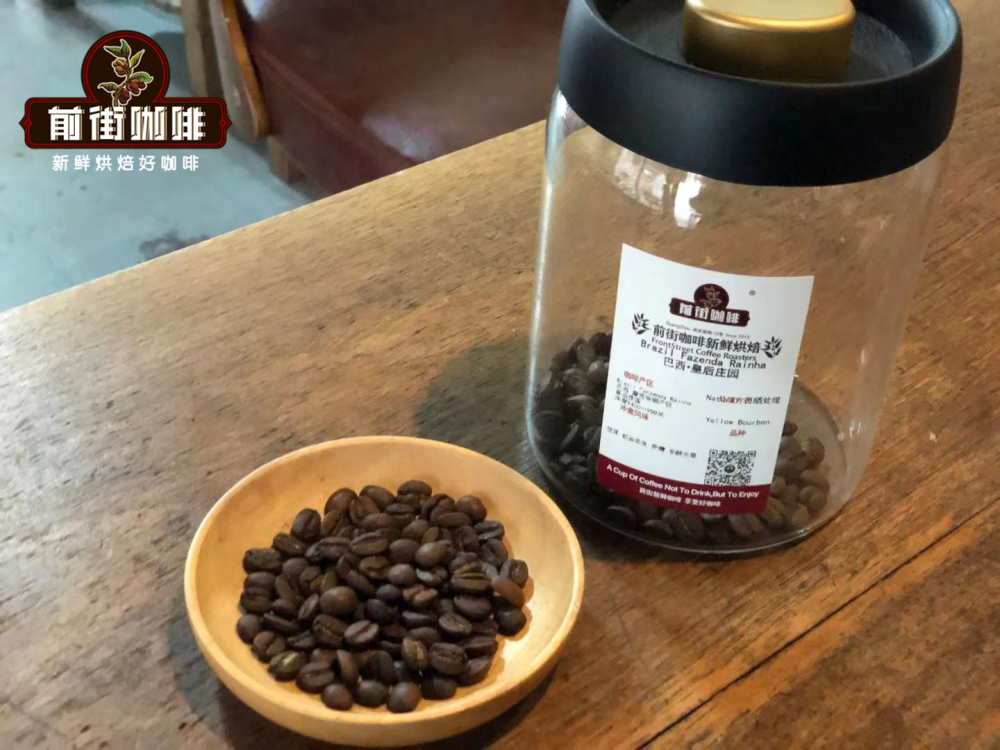
Front Street Coffee Brazilian Queen Manor Coffee beans
Producing area: Morgiana, Sao Paulo, Brazil
Manor: Queen's Manor
Altitude: 1400 m-1950 m
Variety: yellow bourbon
Treatment method: solarization treatment
The Queen's Manor covers an area of about 280 hectares, while more than 200 hectares of land are planted with lower yields but better flavors of yellow bourbon coffee. After the verification of modern science, the yellow bourbon coffee variety is a natural variety of the red bourbon variety. It is recorded that it was found in Sao Paulo in 1871. This variety has a thicker pectin layer and more abundant sugars.
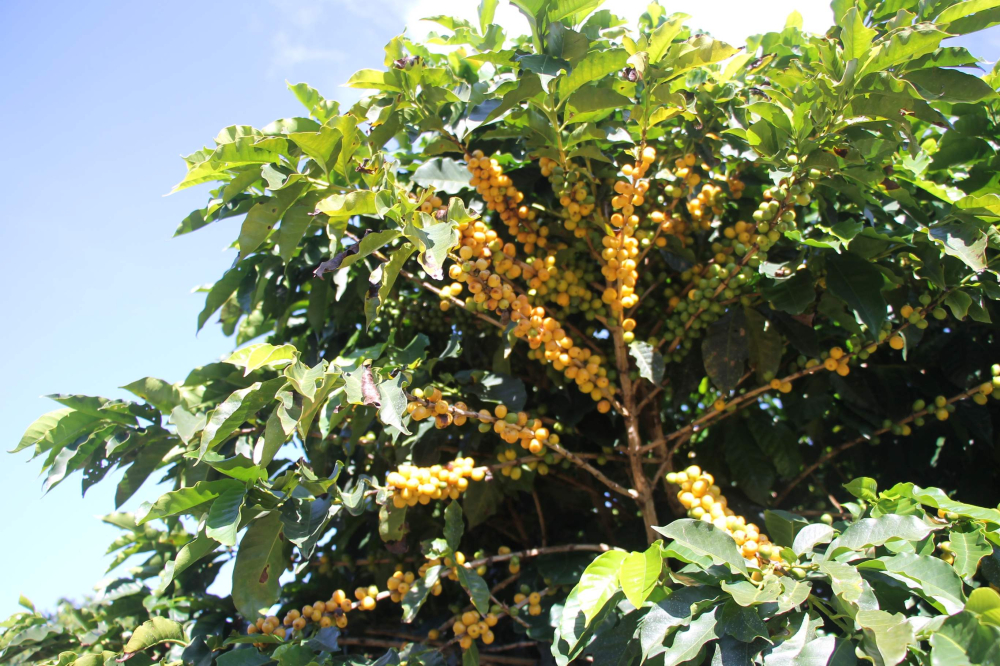
On the other hand, Qianjie, the yellow bourbon coffee beans of the Brazilian Queen's Manor, adopted a small-scale sun treatment, and the whole coffee fruit was completely and evenly laid on the elevated bed for sun drying, retaining more sugars. Let the sugar more and better penetrate into the raw coffee beans. Because the workers often turn the coffee fruits, they avoid the unpleasant sour taste and the sense of fermentation. Sun treatment also makes yellow bourbon coffee sweeter and more delicious.
When cooking the two Brazilian coffee beans in Qianjie, Qianjie recommends using a KONO filter cup, a water temperature of 88 degrees Celsius and a medium grinding degree.
Filter cup: KONO filter cup
Water temperature: 88 degrees Celsius
Amount of powder: 15g
Ratio of powder to water: 1:15
Grinding degree: 75% of the pass rate of Chinese standard No. 20 screen
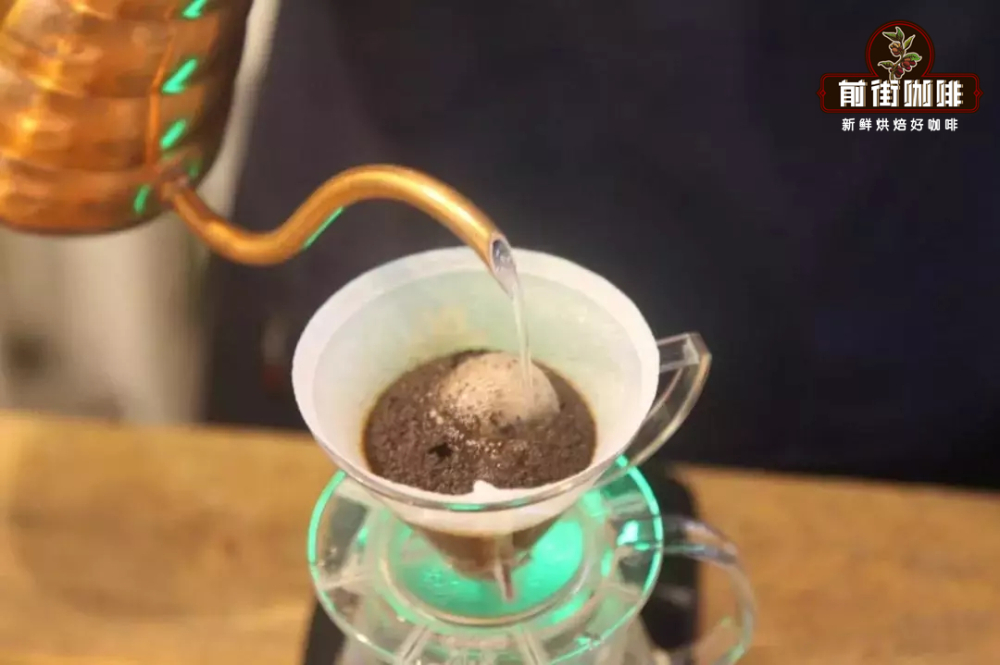
First wet the coffee powder completely with 30 grams of hot water and steam for 30 seconds, then pour in a small water flow from the central point and slowly circle to 125 grams for segments, the water level in the filter cup drops to about to reveal the powder bed to continue water injection, stop water injection until 225 grams, and the filter cup can be removed when the water in the filter cup is completely low to the bottom of the pot, and the total extraction time is about 2 minutes.
For more information about coffee beans, please follow the coffee workshop (Wechat official account cafe_style) and exchange professional coffee knowledge. Please add Wechat account kaixinguoguo0925.
Important Notice :
前街咖啡 FrontStreet Coffee has moved to new addredd:
FrontStreet Coffee Address: 315,Donghua East Road,GuangZhou
Tel:020 38364473
- Prev
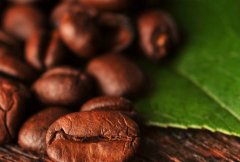
Brazilian coffee has a low sour taste and is suitable for public taste.
Following Cafe (official Wechat account vdailycom) found that the Brazilian coffee industry follows the principle of picking first and screening later, but in other Latin American countries, people only pick the fully ripe fruit, and if it is not ripe enough, the growers will leave the fruit on the tree. Why is there such a big difference between the two methods? The reason lies in the raw bean.
- Next
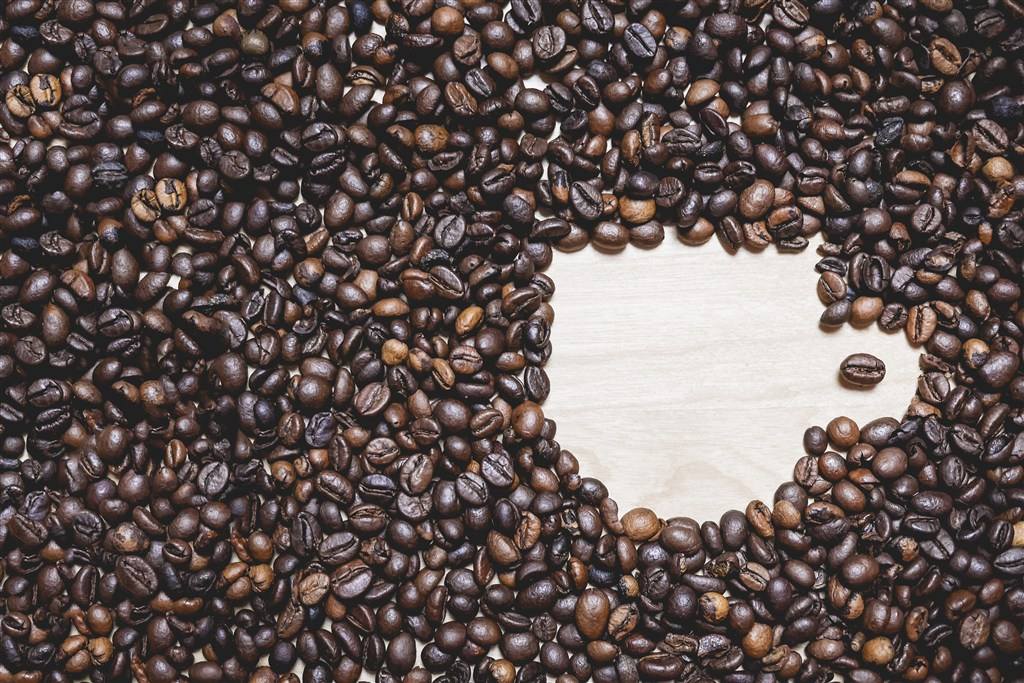
What's the coffee shop like in Brazil?
Following Cafe Review (Wechat official account vdailycom) found that Beautiful Cafe opened a small shop of its own, NO.1, what's the coffee shop like in Brazil? Let everyone down! According to Zhu's investigation, the existence of cafes in this coffee kingdom is really rare! General Manager Zhu said on the program that there are probably three reasons why there are fewer cafes in Brazil: first, Brazil's economy is not wrong.
Related
- Detailed explanation of Jadeite planting Land in Panamanian Jadeite Manor introduction to the grading system of Jadeite competitive bidding, Red bid, Green bid and Rose Summer
- Story of Coffee planting in Brenka region of Costa Rica Stonehenge Manor anaerobic heavy honey treatment of flavor mouth
- What's on the barrel of Blue Mountain Coffee beans?
- Can American coffee also pull flowers? How to use hot American style to pull out a good-looking pattern?
- Can you make a cold extract with coffee beans? What is the right proportion for cold-extracted coffee formula?
- Indonesian PWN Gold Mandrine Coffee Origin Features Flavor How to Chong? Mandolin coffee is American.
- A brief introduction to the flavor characteristics of Brazilian yellow bourbon coffee beans
- What is the effect of different water quality on the flavor of cold-extracted coffee? What kind of water is best for brewing coffee?
- Why do you think of Rose Summer whenever you mention Panamanian coffee?
- Introduction to the characteristics of authentic blue mountain coffee bean producing areas? What is the CIB Coffee Authority in Jamaica?

